
Portfolio of (some) work 1999 – 20223


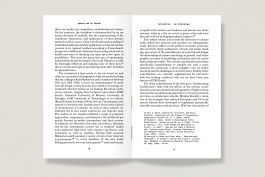

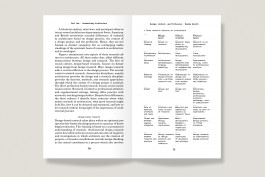








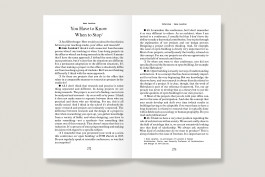



Against and for Method
Book design, layout, typography for Against and for Method – Revisiting Architectural Design as Research, 284 pages, published by gta Zürich at the ETH Zürich. Editor: Jan Silberberger. Contributions by Bernhard Böhm, Johan De Walsche, Kim Helmersen, Adam Jasper, Monika Kurath, Claudia Mareis, Amy Perkins, Wolf Reuter, Hans-Jörg Rheinberger, Jeremy Waterfield, and Albena Yaneva plus interviews with Adam Caruso, Dietmar Eberle, Momoyo Kaijima, Anne Lacaton and Elli Mosayebi. Project manager and copyeditor: Jennifer Bartmess; Proofreader: Christopher Davey; Printed by Offsetdruckerei Grammlich; Bookbinding: Buchbinderei Spinner; Paper: Munken Print Cream 15; Typefaces: Times New Roman and Helvetica Monospace 821; Bookmark-photo: ©Grazia Borrini-Feyerabend. ‘Against and for Method’ is inspired by ‘Against Method’ (Wider den Methodenzwang) by Paul Feyerabend, and we wanted our design approach to play with the ideas of method and ‘un-method’ discussed. Typographically, we aimed for a straightforward, academic, methodically-designed book – a bit like a Word document or a Wikipedia article. We used Times New Roman for the main copy (regular) and also for the book title (bold/bold italics), chapter titles (regular) and page numbers (bold). The supporting typeface is Helvetica Monospace 821 which is used for essay subheaders, footnotes and footnote reference numbers (all regular), simple tables (regular/bold/italics) and running headers (bold). As the book has no images (and we didn‘t want to ‘invent’ any) we treated the text as image starting with the introduction on the front cover. Method at the expense of tradition. Our design includes a loose private photo (printed on regular photo paper Fujifilm paper and printed at Cewe online photp printers) which was placed randomly in each book. We wanted this to feel like an accident or something left behind, having perhaps been used as a bookmark by a previous reader. For careful readers the mystery will be revealed in footnote 18 of the introduction: ‘The bookmark within this book (if it is still there upon reading) shows a photo, taken by Grazia Borrini-Feyerabend, of Feyerabend scrubbing dishes.’ As Paul Feyerabend played a vital role as the starting point for the writing of this book and also refers to him and his book ‘Against Method’ from 1975 in the title, this seemed to create the right tension between methodical/unmethodical, official/unofficial, theoretical/practical through which to show our appreciation to the man. And also to give the purposeful seriously (associated with methodical) looking book a subtle and playful/chaotic (associated with unmethodical) counterpart. The book was also bound with a rainbow-coloured thread. Usually a book is sewn with threads of a single colour (white, black, etc.). We used rainbow-coloured threads which led to a a seemingly random (yet highly methodical) result. It also means that none of the books are the same, since different colour combinations occur in each volume. The book was awarded with the ‘Best German Book Award’ by the Stiftung Buchkunst in Frankfurt and also made it onto the shortlist of the DAM Architectural Book Award of the German Architectural Museum in Frankfurt/Main.
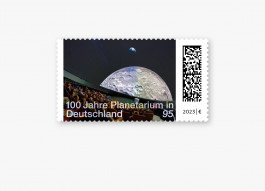
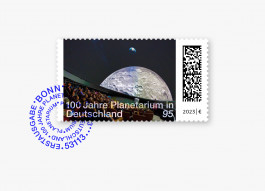





















100-Year anniversary stamp for the Planetarium in Germany
It seemed appropriate to use a dramatic photo of a planetarium show as a reminder of the magic within (to those who’ve been to one), or a prompt to go (for those who haven’t) as the staring point for this stamp design which was published on the 5th October 2023 by Bundesfinanzministerium / German Post Office. As a little extra, we added silver foil blocking to the two planets (earth + moon) – some excitement when you hold the stamp in your hand which, unfortunately, we can’t recreate for you here :) The stamp has a value of 0.95€. We also designed the franking stamps (Bonn and Berlin) and the sheet with 10 stamps.
100 Years Otl Aicher (1921–1986)
‘A stamp worth 155 (€ cent) / Otl Aicher, Graphic Designer 1922-1991’. Stamp design celebrating the 100th birthday of graphic designer Otl Aicher (1922-1991), published on the 5th May 2022 by Bundesfinanzministerium / German Post Office. Otl Aicher who was profoundly affected by the experience of the Third Reich, was categorically against any kind of pompous exaggeration. Instead, he stood for clarity and information. Mythical, transfiguring things horrified him. He wasn't interested in styles: “truth lies within a thing, not above it.” The stamp concept grew out of these important aspects of Otl Aicher's way of working and thinking. Visually the design reflects Aicher’s work for the Munich 1972 Olympic Games using the main colour ‘Olympia-Hellblau 72’ and ‘Univers’ font by Adrian Frutiger as implemented on the cover of the ‘Guidelines and standards for the visual design by the Organising Committee for the XX Olympiad Munich 1972’ (republished in 2019 by Niggli/Braun Publishing. Since 2022 is also the 50th anniversary of those games – which Aicher wanted to be cheerful, light-hearted, non-pompous, apolitical and free from ideology (those were the days…) – it also marks another anniversary. A portrait of Aicher (which would traditionally feature on such a stamp) was deliberately omitted (see exaggeration, transfiguration) but also because “a graphic designer is a graphic designer. he is what he can.” In this case the graphic designer Otl Aicher informs, indirectly through us, that what you hold in your hands is a stamp worth 155 cents. We felt that the simplicity and straight-forward nature of this statement was a much more apt celebration of his work than any portrait we could find. We added the words ,Grafiker‘ (‘graphic designer’), which weren't part of the brief, for three reasons. Firstly, for information (see above). Secondly, to better convey the thematic content of the stamp to the general public, the stamp buyers. But finally, and most importantly, because Aicher was a proud representative of our autonomous profession and autonomous job title: “graphic designers are graphic designers as a result of their abilities. graphic designers have no titles,…” / “we decisively, determinedly, unyieldingly reject any state authority as far as graphic design is concerned” / “and who can do that today? people who rely on themselves. and they are not the worst.” You can read about this and more in the book ‘the world as design‘, (chapter: ‘graphic designers’ space to be themselves’, p. 167ff), Ernst & Sohn, 1991/2014). The Berlin & Bonn franking stamps we designed (which will be stamped onto the actual stamps on the first day of issue, today) feature a stamp icon taken from the pictogram system Aicher started while working on the Munich 1972 Olympic Games.
225 Years Heinrich Heine (1797–1856)
‘That was but a prelude; where they burn books, they will ultimately burn people as well.’ Stamp design celebrating the 225th birthday of poet, writer and literary critic Heinrich Heine (1797-1856), published on the 1st December 2022 by Bundesfinanzministerium / German Post Office. We decided to let Heine (poet, writer and literary critic) have his say with a quote that is also extremely relevant in today’s times of threatened freedom of opinion and freedom of the press and presents him as a socially critical and still contemporary thinker: “That was but a prelude; where they burn books, they will ultimately burn people as well.” Among the thousands of books burned on Berlin's Opernplatz in 1933, following the Nazi raid on the Institute for Sexology, were works by Heinrich Heine. To memorialize the event, one of the most famous lines of Heine's 1821 play ‘Almansor’, spoken by the Muslim Hassan upon hearing that Christian conquerors burned the Quran at the marketplace of Granada, was engraved in the ground at the site: ‘Das war ein Vorspiel nur, dort wo man Bücher verbrennt, verbrennt man auch am Ende Menschen.’

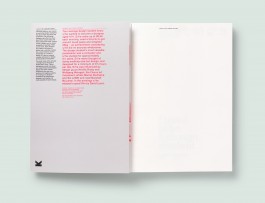














I used to be a design student – 50 graphic designers then + now
The book we authored, edited and designed was published in February 2013 by Laurence King Publishing in London. It looks at the process a designer goes through in finding their ‘voice’. We asked fifty graphic designers to give us the low-down about their student days and their professional lives. A piece of their college work is shown alongside an example of current work. Each designer also offers a key piece of advice and a warning. Topics addressed include how ideas are researched and developed; design and other cultural influences, then and now; positive and negative aspects of working as a designer; motivations for becoming a designer; and whether it's really possible to teach design. Awarded a Bronze Nail at the ADC (Art Directors Club) für Deutschland and a Certificate of Typographic Excellence at the TDC (Type Directors Club) in New York. Reviews on eye Magazine, Brain Pickings, It’s Nice That, Fast Company Design and other places. Order online at Laurence King, amazon.co.uk, amazon.com, amazon.de. In 2014 a Korean edition of the book was published by ag books and in 2016 a Chinese edition was published by HuaZhong University of Science & Technology Press. Contributions From Andreas Gnass (U9 Visuelle Allianz), Andrew Stevens (Graphic Thought Facility), Annelys De Vet, António S. Gomes (Barbara Says...), Ben Branagan, Bernd Hilpert (Unit-Design), Brian Webb, Christian Heusser (Equipo), Daniel Eatock, Danijela Djokic (Projekttriangle), Emmi Salonen (Studio Emmi), Éric & Marie Gaspar (Éricandmarie), Fons Hickmann (Fons Hickmann M23), Hans Dieter Reichert (Hdr Visual Coomunication), Holger Jacobs (Mind Design), Hoon Kim (Why Not Smile), Hyoun Youl Joe (Hey Joe), Isabelle Swiderski (Seven25), James Goggin (Museum Of Contemporary Art, Chicago), Jan Wilker (Karlssonwilker), Julie Gayard (Jutojo), Kai Von Rabenau (Mono.Graphie), Ken Garland, Kirsty Carter (A Practice For Everyday Life), Kristine Matthews (Studio Matthews), Lars Harmsen (Magma Brand Design), Laurent Lacour (Hauser Lacour), Liza Enebis (Studio Dumbar), Lucinda Newton-Dunn (Space-To-Think), Maki Suzuki (Åbäke), Marc Van Der Heijde (Studio Dumbar), Margaret Calvert, Marion Fink, Martin Lorenz (Twopoints.Net), Matthias Görlich (Studio Matthias Görlich), Michael Georgiou (G Design Studio), Nikki Gonnissen (Thonik), Oliver Klimpel (Büro International), Paul Barnes, Prem Krishnamurthy (Projects Projects), Renata Graw (Plural), Richard Walker (Kk Outlet/Kesselskramer), Sandra Hoffmann Robbiani (Visual Studies) , Sascha Lobe (L2m3), Stefan Sagmeister (Sagmeister Inc.), Sven Voelker (Sven Voelker Studio), Tim Balaam (Hyperkit), Urs Lehni (Lehni-Trüb, Rollo Press), Yasmin Khan (Counterspace), Yves Fidalgo (Fulguro).



















Stamp Design – 100 Jahre Frauenwahlrecht (100 Years Women’s Suffrage in Germany)
The stamp and the first day cover stamps for 100 Jahre Frauenwahlrecht. The historical image, in conjunction with the typography, reflects the struggle for equality of women at the end of the 18th and beginning of the 19th century (until today). An example of this struggle is Marie Juchacz, the first speaker in front of a German parliament, after women’s suffrage was won. The photo shows her in 1919 during a speech in front of a crowd in Berlin. The typographical treatment serves also as a reference and hommage to the contemporary American (feminist) artist Barbara Kruger, and to Aleksander Rodchenko, the Russian artist, sculptor, photographer and graphic designer who played a vital role during the Russian October Revolution in 1917 which had a great influence on the German November Revolution in 1918, which finally brought the women right to vote to Germany.
100 Years Joseph Beuys (1921–1986)
Stamp design celebrating the 100th birthday of artist Joseph Beuys (1921-1986), published on the 10th June by Bundesfinanzministerium / German Post Office. Beuys was best known for his expanded concept of art (everyone is an artist, social sculpture, etc.). A key feature on many art pieces of his were his stamps and signatures which he applied to almost everything, making it his his own and calling for people to see art everywhere. This was central to our design approach. We also played with the fact, that our stamp design features mainly stamps which in turn will get stamped/franked themselves once in the post. This creates a graphic game – an ironic questioning of responsibilities and authorities. An invitation that characterises Beuys's work: to think new, to rethink and to think beyond boundaries and habits. The stamp contains all the important stamps used by Beuys and is a crop of the book cover/fly-leaf of ‘Beuys, Joseph: Drawings 1947-59 I, Conversation between Joseph Beuys and Hagen Lieberknecht, Schirmer Verlag, Cologne, 1972‘ (Foto: Saša Fuis / © VG Bild-Kunst for the works of Joseph Beuys, Bonn 2020). Since he supervised the design of the book cover the caption for this stamp could also be ‘Beuys designs his own stamp’. The stamp was printed by Giesecke+Devrient in Leipzig with 7 Pantone colours and in a print run of approximately 3,3 million. All German postage stamps are selected through competitions in which 7 designers/studios take part at the invitation of the Bundesfinanzministerium (Federal Ministry of Finance). In the past 15 years or so we took part in 14 of such competitions. We succeeded twice and our design was printed. This Beuys stamp now and the stamp for ‘100 Years Women’s Suffrage’ in 2019 (see further down). In May 2022 another of our stamp designs will be published: 100 Years Otl Aicher.
Stamps
Since 2003 we have been asked 18 times by the Bundesfinanzministerium (Referat Postwertzeichen) to an invited stamp competition. So far we got one 3rd place (for the stamp we designed for the ‘100th birthday of politician Annemarie Renger’ in 2018) and two 2nd places (for the stamps we designed for the ‘Biathlon World Championships in Ruhpolding’ in 2012 and the stamp for ‘Das Grüne Band Deutschland (The Green Belt Germany)’ in 2019). In January 2019 our first stamp who won 1st place was published on the topic of ‘100 Years Frauenwahlrecht’ (Women’s suffrage). Other 1st place stamps, which got published followed in June 2021 (‘100 Years Joseph Beuys’), in May 2022 (‘100 Years Otl Aicher’), in December 2022 (‘225 Years Heinrich Heine‘) and in October 2023 (‘100 Years of Planetarium in Germany’) – please see also extra features for those. Other stamp design proposals we did were on the topic of ‘Valentine’s Day’, ‘500 Years of German purity law for beer’, ‘First official postal flight in Germany’, ‘100 Years of Volkshochschule (adult evening classes) , ‘Foootball Euro 2020’ and ‘Brothers Grimm – Frau Holle’ and ‘100 Years Loriot/Vicco von Bülow‘.




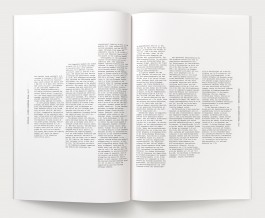




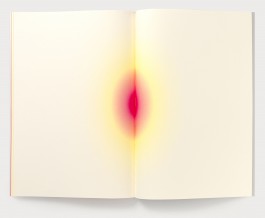
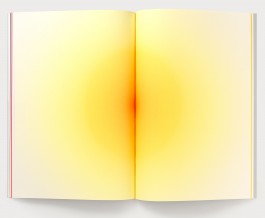





Art direction and design of the 2011/12 annual report of lighting company Zumtobel. The design separated the report into two distinct volumes: a purely typographical, black and white book with the annual facts and figures typeset entirely in 8pt Courier, alongside a ‘silent’ publication of pure colour, a translation into print of the 1998 video work ‘Wounds and Absent Objects’ by Anish Kapoor. Reviewed at It’s Nice That, the Creative Review blog and Co.Design, the report was selected for the Designs of the Year 2013 awards at the Design Museum in London, nominated at Tokyo TDC and awarded a Gold Cube at the 92nd annual ADC Art Directors Club Global Awards in the US. Furthermore, it received a Golden Nail at the ADC für Deutschland awards and a Yellow Pencil at the D&AD Awards.








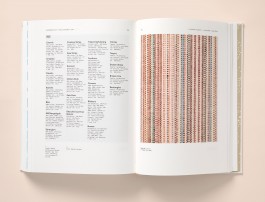




Vitra Design Museum: Alexander Girard – A Designer’s Universe
Design of a catalogue/monograph for “Alexander Girard: A Designer’s Universe”, a travelling exhibition which opened at the Vitra Design Museum in Germany in 2016. The 512-page publication is the first Girard book to extensively discuss the designer’s career and legacy, with six essays, a biography and an illustrated list of works with many previously unpublished material; a real treasure for Girard fans and researchers. Although we knew that the sheer amount of content would lend a certain gravitas to this publication, we didn’t want it to feel too dry or academic, and wanted the design to do justice to the work. We also wanted readers to get a sense of the work and the person before starting to read, so after going through the vast archives of folk objects, textiles, works and family photographs, we created a 120-page visual essay titled ‘Connections’ which served as the introduction to the book. When you publish old material it is often viewed nostalgically as something ‘retro’ and isn’t appreciated for what it truly is. We wanted to make sure that this didn’t happen, and that our book was engaging to a contemporary audience. We brought back the faded colours in the textiles, and introduced a sense of play to the juxtaposition of the images, in a way we felt was true to the spirit of Girard’s playfulness and sense of humour. The book was published in a German and English edition.

Endless Journey
Art direction, design and production of Tom Gauld’s ‘Endless Journey’ – a myriorama inspired by the works of Laurence Sterne. The pack consists of twelve picture cards that can be arranged to form 479,001,600 different landscapes. It was commissioned by The Laurence Sterne Trust with support by the Arts Council England on the occasion of the ‘Sentimental Landscapes’ exhibition at the Shandy Hall Museum in North Yorkshire. You can buy ‘Endless Journey’ here, and read more about it on It’s Nice That. Awarded with a pencil at the D&AD Awards.

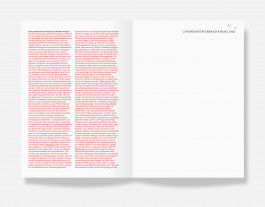
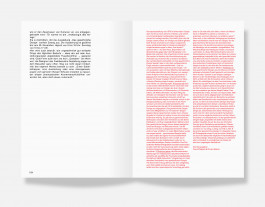





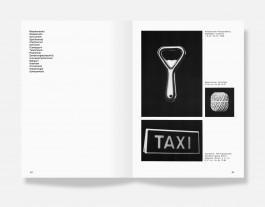




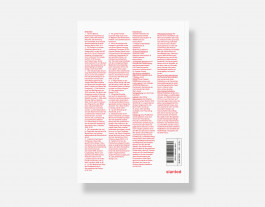
Das gewöhnliche design (The ordinary design)
This facsimile was edited and designed by us and Florian Walzel and published by Slanted Publishers. „Das gewöhnliche Design“ (The ordinary Design) is a hidden classic of german design history, something the vinyl era would have called a B-side hit. As early as 1976 a group of students and young professors at the Faculty of Design at the University of Applied Sciences in Darmstadt questioned the way design objects were generally perceived, talked and written about. Frustrated by the contrast of their self-perception as comprehensive designers and the prospect to have future careers as mere product stylists, they were looking for an alternative understanding of what constitutes good design. In the widely known book (and exhibition) ‘Super Normal’ by Naoto Fukasawa & Jasper Morrison which was published Lars Müller Publishers in 2007 Gerrit Terstiege writes: 'Almost exactly thirty years before the first ‘Super Normal’ exhibition in the Axis Gallery in Tokyo, ‘Das gewöhnliche Design’ exhibition took place at the Mathildenhöhe in Darmstadt… Explicitly selected to counteract the dominant role and overly solemn approach to Jugendstil in Darmstadt at the time, the 110 objects seem, at first glance, to prefigure the ‘Super Normal’ project. Although ‘Das gewöhnliche Design’ must be considered one of the earliest attempts to anchor appreciation of mundane qualities in design discourse, the catalog became a rarity and is now available in only a few libraries. Slanted’s reprint of ‘Das gewöhnliche Design’ with an introduction of the editors Frank Philippin and Florian Walzel returns this work to a wider audience. In a time that dedicates its cultural attention almost exclusively to novelty and exceptionalism the every day utility is the silent opponent of „design“. Thanks to Gerd Ohlhauser for the active support and accompaniment of the project and the Association of Friends and Sponsors of the Design Department of the Darmstadt University of Applied Sciences e.V. for the funding.




Visual Identity Start
including social media tiles, poster, flyer, leaflets. Start is a new educational offer for pupils between school and university at the design faculty Frank teaches at since 2006. The (almost) free, one-semester artistic orientation course offers a structured introduction to numerous artistic techniques, methods, strategies and forms of expression through project work, seminars, lectures, workshops and excursions. The course should prepare for studies on a design or art course such as the courses we offer at the Faculty of Design at Darmstadt University. The first course will start in October 2023 and will end in February 2024. Application deadline is July 15th. The Start logo is made of the typeface Times Less by Rade Matic.









Make new space – Architectural Projects by Anish Kapoor
Design of a two-volume, 1200-page publication bringing together Kapoor’s architectural projects and ideas spanning the last 40 years. The images trace the journey of architectural forms across sketchbooks, digital renders, studio models, plans and installed pieces of architecture. Our design plays on the idea of the creative process stages as well as the book space itself: each chapter is delineated by a different paper stock, with images moving across the back cover of one book and onto the front of the other. For the book title, we drew on a quote by Kapoor in conversation with Nicholas Baume in 2008: “To make new art you have to make new space.” The volume is published by Steidl and contains texts by Deyan Sudjic, Richard Deacon, Donna De Salvo, Marina Warner, Jean de Loisy, Jonathan Jones, and Hans-Ulrich Obrist in conversation with Anish Kapoor. Photographs © Steidl
Typocircle talk poster
We gave a Typocircle talk in April 2015 at the St Bride Library in London. For this we also designed an A1 ‘folding‘ poster (printed single colour black on the front and single colour yellow on the back). This was printed by Gavin Martin Colournet Ltd on Colorplan 135gsm paper sponsored by GF Smith. The first pic shows the poster after the corner has been folded over. The second pic shows the front of the poster, the third the (yellow) back.





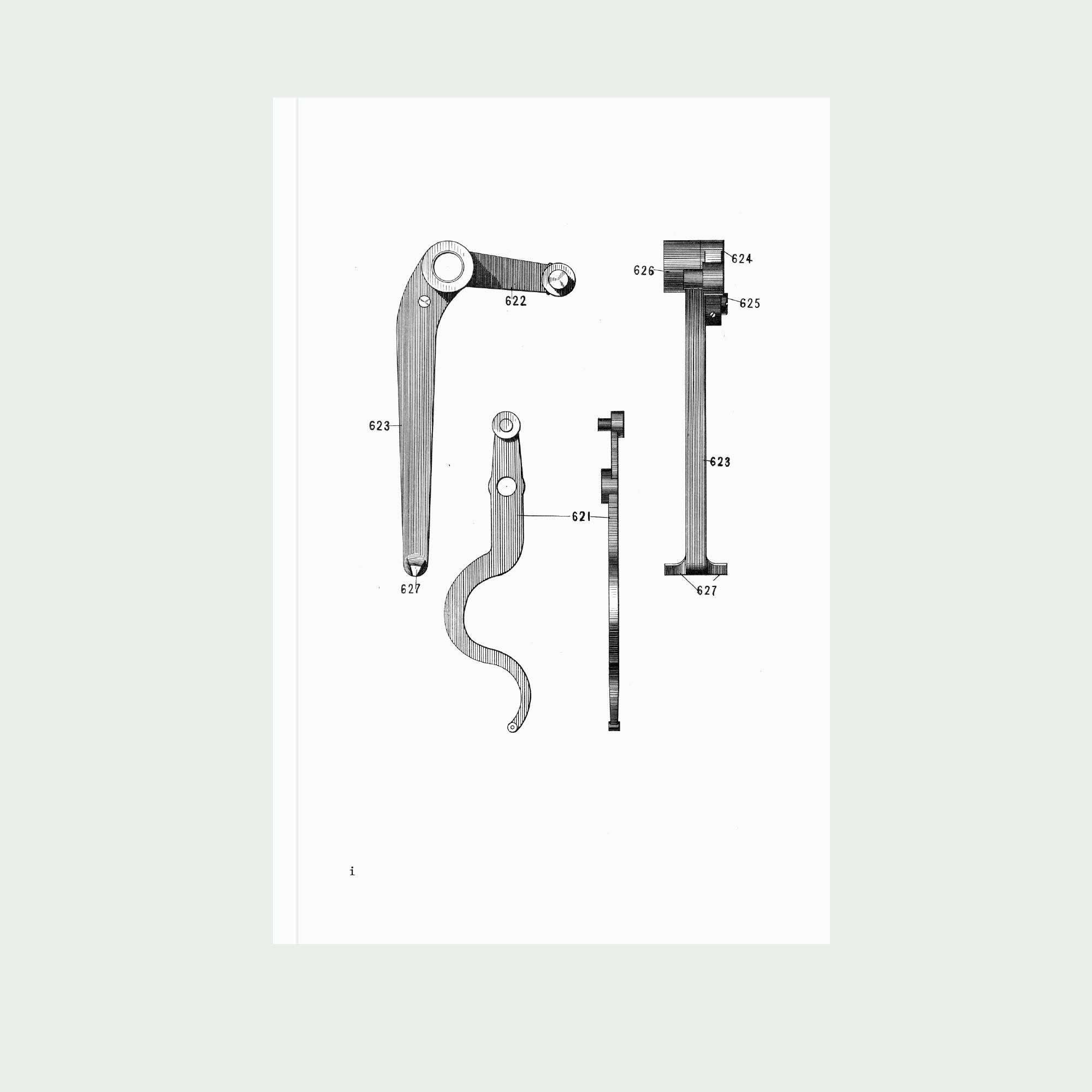








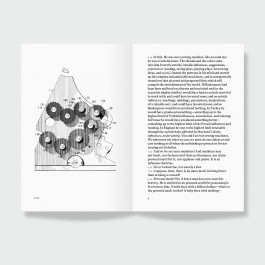










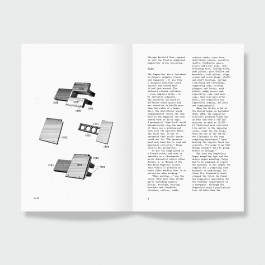



What is man? | J. W. Paiges’ Machine for Distributing, Setting, and Justifying Type
“A man’s brain is so constructed that it can originate nothing whatever. It can only use material obtained outside. It is merely a machine, and it works automatically, not by willpower. It has no command over itself, its owner has no command over it.” What is man? is a dialogue between a young man and an old man regarding the nature of man. the title refers to psalm 8:4, which begins ‘what is man, that you are mindful of him…’. The text was written by J. W. Bothwell (Samuel Langhorne Clemens alias Mark Twain) in 1906. Twain never really published the book. He had 250 copies printed at the De Vinne press in New York for private circulation only. The book was anonymous, the author distributing it only among his intimate friends. After his death in 1910, the New York Tribune published a feature on it. Criticism at that time focused on its dark and anti-religious nature. The drawings of US patent 547 860, issued on the 15th october 1895 to J. W. Paiges’ Machine for Distributing, Setting, and Justifying Type, an explanation by Dr. David M. Macmillan, and an essay with the title ‘Twain, Paige and the Machine that destroyed them’ by Jim Hughes are featured alongside the philosophical text.
Idea, concept, edit & design by Frank Philippin & Billy Kiosoglou alias Brighten the Corners
Published by and available at Windpark Books. Also available at Motto Books.
Paperback, 125x190mm, 184 pages, bw, 94 drawings on 100% recycled paper, edition of 250 (numbered) copies
ISBN 978-3-949363-06-1




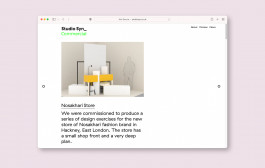






Studio Syn_ – Website
Development of a website and visual identity for interdisciplinary architecture and interior design practice, Studio Syn_. The London- and Athens-based architects (Ursula Dimitriou, Dejan Mrjda, Despoina Tsafou) came together in 2018 with a shared vision of architecture and design. Due to the diversity of the group's activities (commercial work, academia, art practice, and the running of architecture workshops) we separated the projects into five categories: Commercial, Residential, Arts & Culture, Concepts and Workshops, giving equal weight to realised and non-realised concepts. (Visit here).


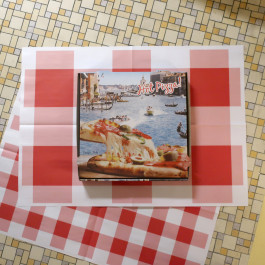

Inject some Italian restaurant vibes to your house, with this 12 page limited edition of 20 digital broadsheets. Printed at Newspaperclub. Thanks to Denise Lisowski for the inspiration.
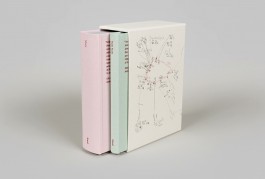

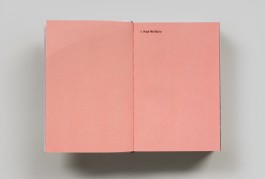



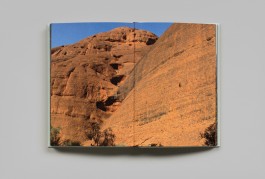


Design for the first ever publication of photographs by Anish Kapoor, the two volumes (752 pages altogether), published by Steidl, trace the artist’s journey through the religious sites of Uluru and Kata Tjuta in the Northern Territory of Australia. Designed as ‘silent’ publications but for Kapoor’s quotes on the front covers, and co-edited with Anish Kapoor Studio, the 362 images follow Kapoor’s gaze capturing his interest in form and pre-form, skin and surface that is present in his sculptural work. (Photographs ©Steidl)

Concept, design and programming for the website of artist Anish Kapoor – live online since 2008 (Visit here). An ever growing chronological list of links to works, videos, texts, studio photographs, sketchbook drawings, or any other relevant page sourced from the web (including a Cloud Gate google for the much photographed sculpture in Chicago), the site has been kept simple yet is extremely dense: a site you can really get lost in.


Heldenzeiten – Staatstheater Darmstadt
Flyer-poster-programme (A1 > A4) for a joint venture between the 3 theatres Staatstheater Darmstadt, Mousonturm Frankfurt and the Alte Oper Frankfurt on the topic of heroes (or rather the end of them…).







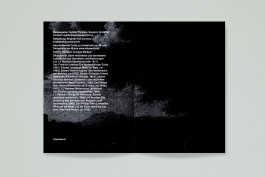

German Romanticism – a recital
Programme, 48pp booklet, A6, for a night of songs by Robert Schumann (song cycle op. 39) and poet's love (op.48) performed by Sybille philippin (mezzo-soprano) and Sungmo Schäffter (piano). Image material: Heavily altered and edited excerpts from paintings and etchings by J C Reinhart (The Ideal Landscape, 1811), Carl Friedrich Lessing (The Thousand Year Oak, 1837), Eduard Robert Hughes (The Valkyrie's Night Watch, before 1915), Johann Christoph Erhard (Resting Artists in the Mountains, 1819), Johann Christian Reinhart (Tomb in the destroyed Etruscan city of Falerium, 1796), Carl Philipp Fohr (Mountain Landscape near Subiaco with Shepherds, 1817), JC Reinhart (Italian Landscape with a Castle on a Ridge, 1804), JC Reinhart (The Great Heroic Landscape dedicated to Schiller, 1800), JC Reinhart (The Invention of the Corinthian Capital by Callimachus, 1846), Carl Philipp Fohr (Lindenfels, View of the Town and the Ruins of the Castle from the Odenwald, approx. 1812).

Post-Brexit Passport
Our design for the post-Brexit passport competition by Dezeen Design Blog has been shortlisted along with 8 others among a total of 200 entries from 34 different countries. The jury included Deyan Sudjic, director of the Design Museum and Margaret Calvert. The designs have been in an exhibition at the Design Museum from June 14th to July 5th 2017. Before that they featured in an exhibition during the Clerkenwell Design Week at Arper, 11 Clerkenwell Road London EC1M 5PA from May 23–25 2017. Our passport features the name of every country in the world listed in order of their immigrant and emigrant populations, with the United Kingdom highlighted in red. The design aims to acknowledge the continuous comings and goings of people and ideas that form civilisation, and most importantly to stress that you only need a passport if you accept the existence of other countries as well.

Teaching in Darmstadt and London
We have bee teaching Graphic Design since 1998. Frank has been a visiting lecturer at various colleges in the UK and Germany, amongst them Kingston University, Brighton University and Merz-Akademie Stuttgart. Since 2007 he is a professor at the Faculty of Design at Darmstadt University. For student projects and information click here. Billy has been an Associate Lecturer at UAL London (UK) since 2014 and a visiting practitioner at Brunel University London.
Charles Barclay Architects
Website design for Brixton-based Charles Barclay Architects www.cbarchitects.co.uk. Avoiding the often over-complicated categorising within architect’s websites the content is instead simply separated into ‘Public’ or ‘Private’ case studies. Visitors can choose between the two, or browse both without a structure being imposed on them. Images are given prominence throughout the website, while further information and PDF case studies are visible by clicking the ‘Project Info’ button. Programming by Simon French.








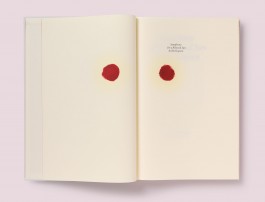

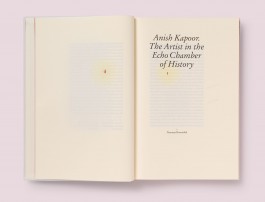








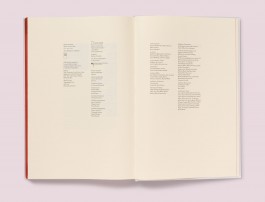

Art direction and design of ‘Symphony for a Beloved Sun’, published on the occasion of ‘ Kapoor in Berlin’, a major solo exhibition by artist Anish Kapoor at the Martin-Gropius-Bau in Berlin. The design anticipates the tension created by bringing contemporary artworks into the classical environment of the Martin-Gropius-Bau. The generously-sized, classical catalogue was stained with red oil paint, given a red cut to the edge, and sewn with a red thread. Maintaining the strict classical grid for all text and images meant that large-scale works stretched across two pages to get the space they needed. Bold lists of work titles served as chapter dividers within the plates section. The 272-page book contains essays by Norman Rosenthal, Horst Bredekamp and Barbara Segelken. Reviewed on It’s Nice That and the Creative Review Blog. Grand Prix winner at the Tokyo TDC Awards 2014, Silver Cube winner at the 93rd annual ADC Art Directors Club Global Awards, nominated for a Yellow Pencil at the D&AD Awards and shortlisted for the Most Beautiful Book Award in Germany. See also other awards we have won for our work here.
Poster design for a lecture series at the University of Darmstadt by practitioners who have more than one practice. Playing on the saying ‘A bird never flew on one wing’ the design split the announcement down the middle, also accommodating for a bi-lingual, English/German poster. Sara de Bondt (Designer/Publisher), Kai von Rabenau (Photographer/Editor) and Christoph Keller (Curator/Choice Fruit Distiller) were among the speakers. Awarded at the TDC Type Directors Club Tokyo.







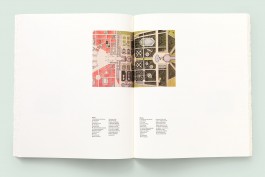

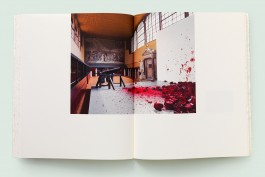




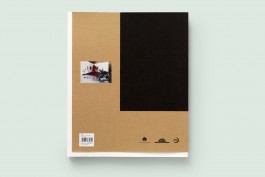










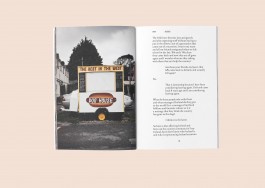
Visual identity for Business to Arts, a Dublin-based organisation facilitating creative partnerships between businesses and the arts. For the logo we wanted to create a mark that was both playful and serious and could happily sit in either a corporate or artistic environment. We merged the initials ‘A’ and ‘B’ in a single ligature, a solution that was bold, simple and anticipated the ‘rough’ treatment the logo may endure in the hands of third parties. Each year, Ireland’s best collaborations between business and the arts are celebrated in an award ceremony. We designed the winner’s brochure for the 2008, 2009 and 2010 Allianz Business to Arts Awards as well as all the other literature for the organization. The design for Business to Arts was awarded at the TDC Type Directors Club Tokyo

Zeichen und Spuren – Kris Scholz
Poster for the exhibition ‘Marks and Traces’ in which the artist Kris Scholz presents his latest work at the Designhaus/Alfred-Messel-Haus on the Mathildenhöhe in Darmstadt. The design approach was typographic so as not to anticipate the works on view in the exhibition -– although the inside of the type was ‘filled’ with a detail of one of the works on display in order to give a hint…
Empathy Museum
Exhibition signage and everything graphic design for the exhibitions and events ‘A Mile in my Shoes’, ‘A Thousand and one Books’ and ‘Everything must go’ by the curator Clare Patey. ‘A Mile in my Shoes’ and ‘A Thousand and one Books’ were organized by the ‘Empathy Museum’.


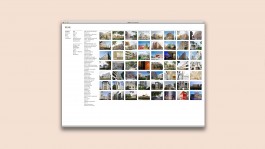








KBNK Architects Website
Website design of www.kbnk.de (not live anymore) for Hamburg-based kbnk Architects. The driving idea was to give the viewer control over the way in which the site is viewed. Case studies can be sorted by type of building, chronology, height, size, cost, or even colour adding a more playful note to the navigation. All images stretch to fit the browser window to use the available space efficiently, while a click on the logo takes this idea further by dropping all navigation entirely.




Illustration and design for Bell Helicopter’s CD, Blade. The illustrations play on the album’s title by using a series of helicopter blade diagrams. Bell Helicopter is the musical playfield of artist Conor Kelly.



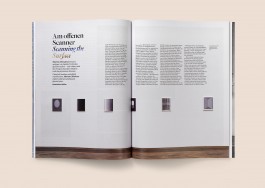
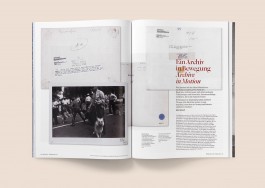
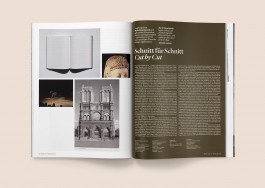




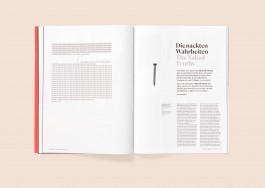


Design, layout and promotional material for frieze d/e, a bilingual German/English magazine by the publishers of frieze, the international contemporary art and culture magazine. With editing and production based in Berlin, the magazine is published four times a year and offers in-depth coverage of contemporary art and culture throughout Germany, Austria and Switzerland, closely following the international artist communities in this region.

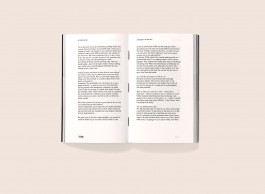

Design for a book of interviews with Anish Kapoor for RMN Grandpalais, France. Using an often-quoted statement by the artist for the front cover, we designed the book as a bi-lingual (French/English) edition with two separate front covers. Winner at the Annual Type Director’s Club awards and exhibition 2012, and featured in Typography 33.
Second Hand Records Stuttgart
Visual identity for one of the best and biggest second hand record stores in Germany including stationery, posters, flyer, bags and signage.





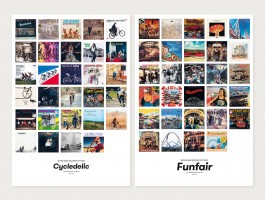
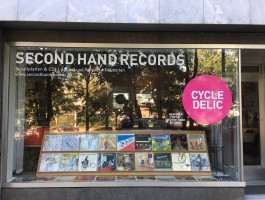




Development of a visual identity, stationery and promotional literature for Chez Vous, a complete home dining experience in Athens created by French chef Tony Mordelet and hospitality professional Eirene Kollintza. Our design plays with the idea of cooking as an art that brings different ingredients together. Awarded at the TDC Type Directors Club Tokyo Awards and ΕΒΓΕ (Greek Graphic Design and Illustration) Awards.






Anah Website
Website design for the architectural practise Anah. Anah means ‘the answer’ in Hebrew. The website is based on questions (which will be answered when clicked…).
Cover design for L’Équipe magazine, the supplement to France’s largest daily newspaper devoted to sports. Published on July 28, 2012, the issue was dedicated to the London Olympics, and Anish Kapoor was asked to design a special artist cover for the occasion. Working in collaboration with the artist, we developed a 3-D pop-up cover of a self-standing form, a 1:1100 ratio model inspired by Orbit at the Olympic Park in London.






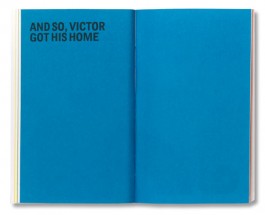

Victor had broken his shell. So, armed with love and a steady supply of lettuce, Susie decided to nurse him back to health. —A story about caring, mending and letting-go drawn with letters and punctuation marks. A self-publication by Brighten the Corners, awarded at the TDC Type Directors Club Tokyo awards. and reviewed in Creative Review Blog + cool hunting + Designer’s Review of Books. Featured in drawn! + Made & Sold + Selected A + Tokyo TDC Vol 20


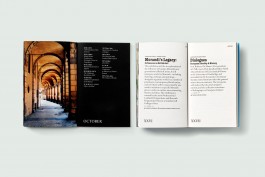
Series design for the Italian Cultural Institute’s programme of events for the duration of four years. To contrast the entirely typographic bulk of the programme, we used the introductory pages as a gallery of images by writer/photographer Dave Foster. Further Italian touches include a generously sized serif typeface for the copy, Latin numerals for pagination, and an elegant pocket-sized format. Awarded at the D&AD Awards and the ADC Art Directors Club Global Awards. Featured In Materials Process Print + Art Directors Annual + D&AD Annual.
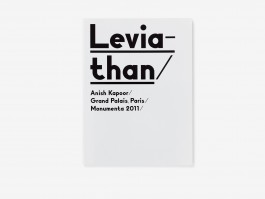


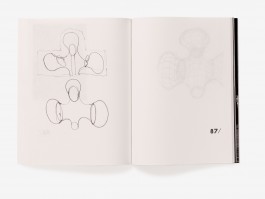







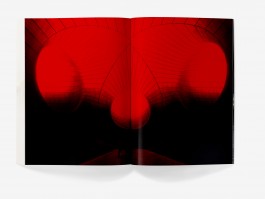



Leviathan
Catalogue design for RMN Grandpalais of the Leviathan exhibition by Anish Kapoor for Monumenta 2011. Two hundred black and white pages of drawings, gouaches, architectural models, studio photographs, and writing lifted out of the artist’s sketchbooks, formed the bulk of the catalogue and traced the preparatory work and idea development process. The final pages of the book were used for the full colour photographs of the installed work within the Nave of the Grand Palais in Paris.



Inbox – 10 Years of Brighten the Corners
In 2008, we collected the most positive, the most negative and the weirdest Emails we received from our clients during 10 years in business and created a series of three posters to celebrate our 10th anniversary with them.
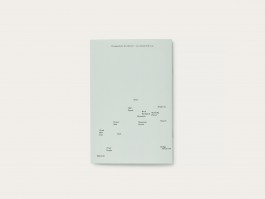



Up & Down the Pyranees
For 64 days, during summer 2011, a group of hikers travelled the entire length of the High Route Pyrenees, some 900km in total. Photographer Tim Mitchell joined the journey between Lescun and Gavarnie documenting moments at different altitudes. Clouds, distant walkers, a tent, a dead cow, a tiny flower, and, at the highest summit, some graffiti. We designed the collection of resulting photographs as ‘Up and down the Pyrenees’, using the various levels of altitude as steps in the layout. Printed in an edition of 100 copies.


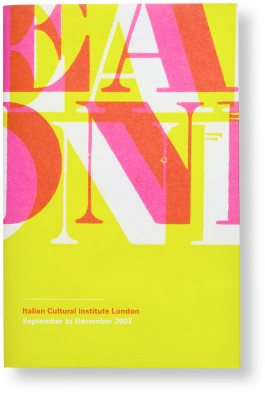







Italian Cultural Institute Programme
Series redesign for the Italian Cultural Institute’s programme of events. We collected popular Italian sayings and printed them in letterpress with Ian Gabb. For each issue, the director pulled a saying out of a bowl to use for the programme’s wrap-around poster/cover (see below). To contrast the colourful outside, we designed the content as a purely typographic black programme, complete with matching staples. The posters were featured in an article on poster design in The Times.

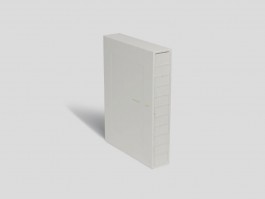


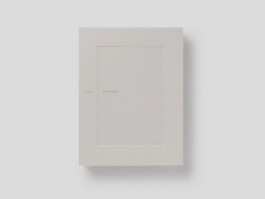



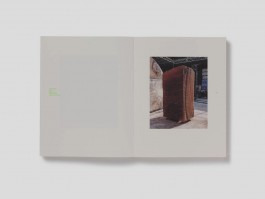














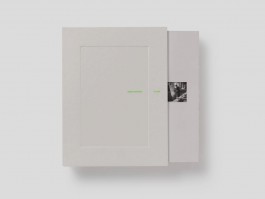

Stone
Design of ‘Anish Kapoor: Stone’ the first comprehensive collection of the artist’s stone sculptures, dating from the 1980s to the present. The volume was designed as a ‘naked’ 352-page book block, to be extracted from its slip case. Front and back views of works are included where available, on the reverse of pages. The book was published on the occasion Anish Kapoor’s exhibition at the Sakıp Sabancı Museum in Istanbul and includes essays from Norman Rosenthal, Ahu Antmen, Halil Berktay, and an interview with Homi Bhabha and Anish Kapoor. Bronze Cube winner at the 93rd annual ADC Art Directors Club Global Awards.

Self-initiated, limited Edition, offset, single colour, size: 500×707mm (B2)
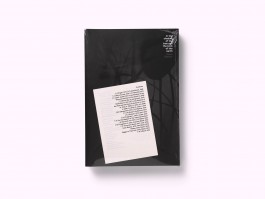












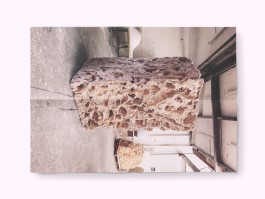

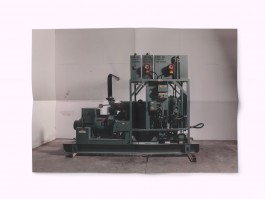





In the shadow of the tree and the knot of the earth
Catalogue design for Anish Kapoor’s exhibition ‘In the shadow of the tree and the knot of the earth’ at the Lisson Gallery in London. Instead of representing the sculptures in a traditional way, the artist's drawings (absent from the exhibition itself) are used to set the mood for the publication. The dark and atmospheric drawings form the main content of the 320-page book, preempting the forms present in the exhibition space, which emerge as loosely inserted, full-colour photographs of the work. (Winner at the D&AD Awards 2013)
Portfolio of (some) work 1999 — 2023






100-Year anniversary stamp for the Planetarium in Germany
It seemed appropriate to use a dramatic photo of a planetarium show as a reminder of the magic within (to those who’ve been to one), or a prompt to go (for those who haven’t) as the staring point for this stamp design which was published on the 5th October 2023 by Bundesfinanzministerium / German Post Office. As a little extra, we added silver foil blocking to the two planets (earth + moon) – some excitement when you hold the stamp in your hand which, unfortunately, we can’t recreate for you here :) The stamp has a value of 0.95€. We also designed the franking stamps (Bonn and Berlin) and the sheet with 10 stamps.














Das gewöhnliche design (The ordinary design)
This facsimile was edited and designed by us and Florian Walzel and published by Slanted Publishers. „Das gewöhnliche Design“ (The ordinary Design) is a hidden classic of german design history, something the vinyl era would have called a B-side hit. As early as 1976 a group of students and young professors at the Faculty of Design at the University of Applied Sciences in Darmstadt questioned the way design objects were generally perceived, talked and written about. Frustrated by the contrast of their self-perception as comprehensive designers and the prospect to have future careers as mere product stylists, they were looking for an alternative understanding of what constitutes good design. In the widely known book (and exhibition) ‘Super Normal’ by Naoto Fukasawa & Jasper Morrison which was published Lars Müller Publishers in 2007 Gerrit Terstiege writes: 'Almost exactly thirty years before the first ‘Super Normal’ exhibition in the Axis Gallery in Tokyo, ‘Das gewöhnliche Design’ exhibition took place at the Mathildenhöhe in Darmstadt… Explicitly selected to counteract the dominant role and overly solemn approach to Jugendstil in Darmstadt at the time, the 110 objects seem, at first glance, to prefigure the ‘Super Normal’ project. Although ‘Das gewöhnliche Design’ must be considered one of the earliest attempts to anchor appreciation of mundane qualities in design discourse, the catalog became a rarity and is now available in only a few libraries. Slanted’s reprint of ‘Das gewöhnliche Design’ with an introduction of the editors Frank Philippin and Florian Walzel returns this work to a wider audience. In a time that dedicates its cultural attention almost exclusively to novelty and exceptionalism the every day utility is the silent opponent of „design“. Thanks to Gerd Ohlhauser for the active support and accompaniment of the project and the Association of Friends and Sponsors of the Design Department of the Darmstadt University of Applied Sciences e.V. for the funding.







225 Years Heinrich Heine (1797–1856)
‘That was but a prelude; where they burn books, they will ultimately burn people as well.’ Stamp design celebrating the 225th birthday of poet, writer and literary critic Heinrich Heine (1797-1856), published on the 1st December 2022 by Bundesfinanzministerium / German Post Office. We decided to let Heine (poet, writer and literary critic) have his say with a quote that is also extremely relevant in today’s times of threatened freedom of opinion and freedom of the press and presents him as a socially critical and still contemporary thinker: “That was but a prelude; where they burn books, they will ultimately burn people as well.” Among the thousands of books burned on Berlin's Opernplatz in 1933, following the Nazi raid on the Institute for Sexology, were works by Heinrich Heine. To memorialize the event, one of the most famous lines of Heine's 1821 play ‘Almansor’, spoken by the Muslim Hassan upon hearing that Christian conquerors burned the Quran at the marketplace of Granada, was engraved in the ground at the site: ‘Das war ein Vorspiel nur, dort wo man Bücher verbrennt, verbrennt man auch am Ende Menschen.’




Visual Identity Start
including social media tiles, poster, flyer, leaflets. Start is a new educational offer for pupils between school and university at the design faculty Frank teaches at since 2006. The (almost) free, one-semester artistic orientation course offers a structured introduction to numerous artistic techniques, methods, strategies and forms of expression through project work, seminars, lectures, workshops and excursions. The course should prepare for studies on a design or art course such as the courses we offer at the Faculty of Design at Darmstadt University. The first course will start in October 2023 and will end in February 2024. Application deadline is July 15th. The Start logo is made of the typeface Times Less by Rade Matic.
















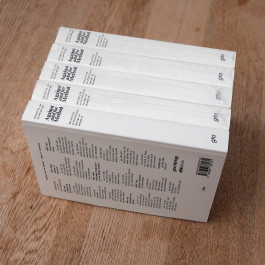
Against and for Method
Book design, layout, typography for Against and for Method – Revisiting Architectural Design as Research, 284 pages, published by gta Zürich at the ETH Zürich. Editor: Jan Silberberger. Contributions by Bernhard Böhm, Johan De Walsche, Kim Helmersen, Adam Jasper, Monika Kurath, Claudia Mareis, Amy Perkins, Wolf Reuter, Hans-Jörg Rheinberger, Jeremy Waterfield, and Albena Yaneva plus interviews with Adam Caruso, Dietmar Eberle, Momoyo Kaijima, Anne Lacaton and Elli Mosayebi. Project manager and copyeditor: Jennifer Bartmess; Proofreader: Christopher Davey; Printed by Offsetdruckerei Grammlich; Bookbinding: Buchbinderei Spinner; Paper: Munken Print Cream 15; Typefaces: Times New Roman and Helvetica Monospace 821; Bookmark-photo: ©Grazia Borrini-Feyerabend. ‘Against and for Method’ is inspired by ‘Against Method’ (Wider den Methodenzwang) by Paul Feyerabend, and we wanted our design approach to play with the ideas of method and ‘un-method’ discussed. Typographically, we aimed for a straightforward, academic, methodically-designed book – a bit like a Word document or a Wikipedia article. We used Times New Roman for the main copy (regular) and also for the book title (bold/bold italics), chapter titles (regular) and page numbers (bold). The supporting typeface is Helvetica Monospace 821 which is used for essay subheaders, footnotes and footnote reference numbers (all regular), simple tables (regular/bold/italics) and running headers (bold). As the book has no images (and we didn‘t want to ‘invent’ any) we treated the text as image starting with the introduction on the front cover. Method at the expense of tradition. Our design includes a loose private photo (printed on regular photo paper Fujifilm paper and printed at Cewe online photp printers) which was placed randomly in each book. We wanted this to feel like an accident or something left behind, having perhaps been used as a bookmark by a previous reader. For careful readers the mystery will be revealed in footnote 18 of the introduction: ‘The bookmark within this book (if it is still there upon reading) shows a photo, taken by Grazia Borrini-Feyerabend, of Feyerabend scrubbing dishes.’ As Paul Feyerabend played a vital role as the starting point for the writing of this book and also refers to him and his book ‘Against Method’ from 1975 in the title, this seemed to create the right tension between methodical/unmethodical, official/unofficial, theoretical/practical through which to show our appreciation to the man. And also to give the purposeful seriously (associated with methodical) looking book a subtle and playful/chaotic (associated with unmethodical) counterpart. The book was also bound with a rainbow-coloured thread. Usually a book is sewn with threads of a single colour (white, black, etc.). We used rainbow-coloured threads which led to a a seemingly random (yet highly methodical) result. It also means that none of the books are the same, since different colour combinations occur in each volume. The book was awarded with the ‘Best German Book Award’ by the Stiftung Buchkunst in Frankfurt and also made it onto the shortlist of the DAM Architectural Book Award of the German Architectural Museum in Frankfurt/Main.











100 Years Otl Aicher (1921–1986)
‘A stamp worth 155 (€ cent) / Otl Aicher, Graphic Designer 1922-1991’. Otl Aicher who was profoundly affected by the experience of the Third Reich, was categorically against any kind of pompous exaggeration. Instead, he stood for clarity and information. Mythical, transfiguring things horrified him. He wasn't interested in styles: “truth lies within a thing, not above it.” The stamp concept grew out of these important aspects of Otl Aicher's way of working and thinking. Visually the design reflects Aicher’s work for the Munich 1972 Olympic Games using the main colour ‘Olympia-Hellblau 72’ and ‘Univers’ font by Adrian Frutiger as implemented on the cover of the ‘Guidelines and standards for the visual design by the Organising Committee for the XX Olympiad Munich 1972’ (republished in 2019 by Niggli/Braun Publishing. Since 2022 is also the 50th anniversary of those games – which Aicher wanted to be cheerful, light-hearted, non-pompous, apolitical and free from ideology (those were the days…) – it also marks another anniversary. A portrait of Aicher (which would traditionally feature on such a stamp) was deliberately omitted (see exaggeration, transfiguration) but also because “a graphic designer is a graphic designer. he is what he can.” In this case the graphic designer Otl Aicher informs, indirectly through us, that what you hold in your hands is a stamp worth 155 cents. We felt that the simplicity and straight-forward nature of this statement was a much more apt celebration of his work than any portrait we could find. We added the words ,Grafiker‘ (‘graphic designer’), which weren't part of the brief, for three reasons. Firstly, for information (see above). Secondly, to better convey the thematic content of the stamp to the general public, the stamp buyers. But finally, and most importantly, because Aicher was a proud representative of our autonomous profession and autonomous job title: “graphic designers are graphic designers as a result of their abilities. graphic designers have no titles,…” / “we decisively, determinedly, unyieldingly reject any state authority as far as graphic design is concerned” / “and who can do that today? people who rely on themselves. and they are not the worst.” You can read about this and more in the book ‘the world as design‘, (chapter: ‘graphic designers’ space to be themselves’, p. 167ff), Ernst & Sohn, 1991/2014). The Berlin & Bonn franking stamps we designed (which will be stamped onto the actual stamps on the first day of issue, today) feature a stamp icon taken from the pictogram system Aicher started while working on the Munich 1972 Olympic Games.









Make new space – Architectural Projects by Anish Kapoor
Design of a two-volume, 1200-page publication bringing together Kapoor’s architectural projects and ideas spanning the last 40 years. The images trace the journey of architectural forms across sketchbooks, digital renders, studio models, plans and installed pieces of architecture. Our design plays on the idea of the creative process stages as well as the book space itself: each chapter is delineated by a different paper stock, with images moving across the back cover of one book and onto the front of the other. For the book title, we drew on a quote by Kapoor in conversation with Nicholas Baume in 2008: “To make new art you have to make new space.” The volume is published by Steidl and contains texts by Deyan Sudjic, Richard Deacon, Donna De Salvo, Marina Warner, Jean de Loisy, Jonathan Jones, and Hans-Ulrich Obrist in conversation with Anish Kapoor. Photographs © Steidl





Typocircle talk poster
We gave a Typocircle talk in April 2015 at the St Bride Library in London. For this we also designed an A1 ‘folding‘ poster (printed single colour black on the front and single colour yellow on the back). This was printed by Gavin Martin Colournet Ltd on Colorplan 135gsm paper sponsored by GF Smith. The first pic shows the poster after the corner has been folded over. The second pic shows the front of the poster, the third the (yellow) back.






















What is man? and J. W. Paiges’ Machine for Distributing, Setting, and Justifying Type
A man’s brain is so constructed that it can originate nothing whatever. it can only use material obtained outside. it is merely a machine, and it works automatically, not by willpower. it has no command over itself, its owner has no command over it.
What is man? is a dialogue between a young man and an old man regarding the nature of man. the title refers to psalm 8:4, which begins ‘what is man, that you are mindful of him…’. The text was written by J. W. Bothwell (Samuel Langhorne Clemens alias Mark Twain) in 1906. Twain never really published the book. He had 250 copies printed at the De Vinne press in New York for private circulation only. The book was anonymous, the author distributing it only among his intimate friends. After his death in 1910, the New York Tribune published a feature on it. Criticism at that time focused on its dark and anti-religious nature. The drawings of US patent 547 860, issued on the 15th october 1895 to J. W. Paiges’ Machine for Distributing, Setting, and Justifying Type are featured alongside the philosophical text, an explanation by Dr. David M. Macmillan, and an essay with the title ‘Twain, Paige and the Machine that destroyed them’ by Jim Hughes.
Idea, concept, edit & design by Frank Philippin & Billy Kiosoglou alias brighten the corners
Published by Windpark Books on the 31st October 2022
Paperback, 125x190mm, 184 pages, bw, 94 drawings on 100% recycled paper, edition of 250 (numbered) copies
ISBN 978-3-949363-06-1











Studio Syn_ – Website
Development of a website and visual identity for interdisciplinary architecture and interior design practice, Studio Syn_. The London- and Athens-based architects (Ursula Dimitriou, Dejan Mrjda, Despoina Tsafou) came together in 2018 with a shared vision of architecture and design. Due to the diversity of the group's activities (commercial work, academia, art practice, and the running of architecture workshops) we separated the projects into five categories: Commercial, Residential, Arts & Culture, Concepts and Workshops, giving equal weight to realised and non-realised concepts. (Visit here).





100 Years Joseph Beuys (1921–1986)
Stamp design celebrating the 100th birthday of artist Joseph Beuys (1921-1986), published on the 10th June by Bundesfinanzministerium / German Post Office. Beuys was best known for his expanded concept of art (everyone is an artist, social sculpture, etc.). A key feature on many art pieces of his were his stamps and signatures which he applied to almost everything, making it his his own and calling for people to see art everywhere. This was central to our design approach. We also played with the fact, that our stamp design features mainly stamps which in turn will get stamped/franked themselves once in the post. This creates a graphic game – an ironic questioning of responsibilities and authorities. An invitation that characterises Beuys's work: to think new, to rethink and to think beyond boundaries and habits. The stamp contains all the important stamps used by Beuys and is a crop of the book cover/fly-leaf of ‘Beuys, Joseph: Drawings 1947-59 I, Conversation between Joseph Beuys and Hagen Lieberknecht, Schirmer Verlag, Cologne, 1972‘ (Foto: Saša Fuis / © VG Bild-Kunst for the works of Joseph Beuys, Bonn 2020). Since he supervised the design of the book cover the caption for this stamp could also be ‘Beuys designs his own stamp’. The stamp was printed by Giesecke+Devrient in Leipzig with 7 Pantone colours and in a print run of approximately 3,3 million. All German postage stamps are selected through competitions in which 7 designers/studios take part at the invitation of the Bundesfinanzministerium (Federal Ministry of Finance). In the past 15 years or so we took part in 14 of such competitions. We succeeded twice and our design was printed. This Beuys stamp now and the stamp for ‘100 Years Women’s Suffrage’ in 2019 (see further down). In May 2022 another of our stamp designs will be published: 100 Years Otl Aicher.




Take-Away Paper Table Cloth for Take-Away Pizza
Inject some Italian restaurant vibes to your house, with this 12 page limited edition of 20 digital broadsheets. Printed at Newspaperclub. Thanks to Denise Lisowski for the inspiration.









Uluru & Kata Tjuta Photographs
Design for the first ever publication of photographs by Anish Kapoor, the two volumes (752 pages altogether), published by Steidl, trace the artist’s journey through the religious sites of Uluru and Kata Tjuta in the Northern Territory of Australia. Designed as ‘silent’ publications but for Kapoor’s quotes on the front covers, and co-edited with Anish Kapoor Studio, the 362 images follow Kapoor’s gaze capturing his interest in form and pre-form, skin and surface that is present in his sculptural work. (Photographs ©Steidl). The book made it onto the Longlist of the Most Beautiful Book Award (Schöneste Deutsche Bücher) in Germany and onto the Longlist of the German Photo Book Prize (Deutscher Fotobuchpreis). See also other awards we have won for our work here.













Vitra Design Museum: Alexander Girard – A Designer’s Universe
Design of a catalogue/monograph for “Alexander Girard: A Designer’s Universe”, a travelling exhibition which opened at the Vitra Design Museum in Germany in 2016. The 512-page publication is the first Girard book to extensively discuss the designer’s career and legacy, with six essays, a biography and an illustrated list of works with many previously unpublished material; a real treasure for Girard fans and researchers. Although we knew that the sheer amount of content would lend a certain gravitas to this publication, we didn’t want it to feel too dry or academic, and wanted the design to do justice to the work. We also wanted readers to get a sense of the work and the person before starting to read, so after going through the vast archives of folk objects, textiles, works and family photographs, we created a 120-page visual essay titled ‘Connections’ which served as the introduction to the book. When you publish old material it is often viewed nostalgically as something ‘retro’ and isn’t appreciated for what it truly is. We wanted to make sure that this didn’t happen, and that our book was engaging to a contemporary audience. We brought back the faded colours in the textiles, and introduced a sense of play to the juxtaposition of the images, in a way we felt was true to the spirit of Girard’s playfulness and sense of humour. The book was published in a German and English edition.










Stamps
Since 2003 we have been asked nine times by the Bundesfinanzministerium (Referat Postwertzeichen) to invited stamp competitions. So far we got one 3rd place (for the stamp we designed for the ‘100th birthday of politician Annemarie Renger’ in 2018 and two 2nd places for the stamps we designed for the ‘Biathlon World Championships in Ruhpolding’ in 2012 and the stamp for ‘Das Grüne Band Deutschland (The Green Belt Germany)’ in 2019. In January 2019 our first stamp who won 1st place was published on the topic of ‘100 Years Frauenwahlrecht’ (Women’s suffrage) – please see extra feature below. Other stamp design proposals we did were on the topic of ‘Valentine’s Day’, ‘500 Years of German purity law for beer’, ‘First official postal flight in Germany’, ‘100 Years of Volkshochschule (adult evening classes) and ‘Foootball Euro 2020’.
















I used to be a design student – 50 graphic designers then + now
The book we authored, edited and designed was published in February 2013 by Laurence King Publishing in London. It looks at the process a designer goes through in finding their ‘voice’. We asked fifty graphic designers to give us the low-down about their student days and their professional lives. A piece of their college work is shown alongside an example of current work. Each designer also offers a key piece of advice and a warning. Topics addressed include how ideas are researched and developed; design and other cultural influences, then and now; positive and negative aspects of working as a designer; motivations for becoming a designer; and whether it's really possible to teach design. Awarded a Bronze Nail at the ADC (Art Directors Club) für Deutschland and a Certificate of Typographic Excellence at the TDC (Type Directors Club) in New York. Reviews on eye Magazine, Brain Pickings, It’s Nice That, Fast Company Design and other places. Order online at Laurence King, amazon.co.uk, amazon.com, amazon.de. In 2014 a Korean edition of the book was published by ag books and in 2016 a Chinese edition was published by HuaZhong University of Science & Technology Press. Contributions From Andreas Gnass (U9 Visuelle Allianz), Andrew Stevens (Graphic Thought Facility), Annelys De Vet, António S. Gomes (Barbara Says...), Ben Branagan, Bernd Hilpert (Unit-Design), Brian Webb, Christian Heusser (Equipo), Daniel Eatock, Danijela Djokic (Projekttriangle), Emmi Salonen (Studio Emmi), Éric & Marie Gaspar (Éricandmarie), Fons Hickmann (Fons Hickmann M23), Hans Dieter Reichert (Hdr Visual Coomunication), Holger Jacobs (Mind Design), Hoon Kim (Why Not Smile), Hyoun Youl Joe (Hey Joe), Isabelle Swiderski (Seven25), James Goggin (Museum Of Contemporary Art, Chicago), Jan Wilker (Karlssonwilker), Julie Gayard (Jutojo), Kai Von Rabenau (Mono.Graphie), Ken Garland, Kirsty Carter (A Practice For Everyday Life), Kristine Matthews (Studio Matthews), Lars Harmsen (Magma Brand Design), Laurent Lacour (Hauser Lacour), Liza Enebis (Studio Dumbar), Lucinda Newton-Dunn (Space-To-Think), Maki Suzuki (Åbäke), Marc Van Der Heijde (Studio Dumbar), Margaret Calvert, Marion Fink, Martin Lorenz (Twopoints.Net), Matthias Görlich (Studio Matthias Görlich), Michael Georgiou (G Design Studio), Nikki Gonnissen (Thonik), Oliver Klimpel (Büro International), Paul Barnes, Prem Krishnamurthy (Projects Projects), Renata Graw (Plural), Richard Walker (Kk Outlet/Kesselskramer), Sandra Hoffmann Robbiani (Visual Studies) , Sascha Lobe (L2m3), Stefan Sagmeister (Sagmeister Inc.), Sven Voelker (Sven Voelker Studio), Tim Balaam (Hyperkit), Urs Lehni (Lehni-Trüb, Rollo Press), Yasmin Khan (Counterspace), Yves Fidalgo (Fulguro).
















Art direction and design of the 2011/12 annual report of lighting company Zumtobel. The design separated the report into two distinct volumes: a purely typographical, black and white book with the annual facts and figures typeset entirely in 8pt Courier, alongside a ‘silent’ publication of pure colour, a translation into print of the 1998 video work ‘Wounds and Absent Objects’ by Anish Kapoor. Reviewed at It’s Nice That, the Creative Review blog and Co.Design, the report was selected for the Designs of the Year 2013 awards at the Design Museum in London, nominated at Tokyo TDC and awarded a Gold Cube at the 92nd annual ADC Art Directors Club Global Awards in the US. Furthermore, it received a Golden Nail at the ADC für Deutschland awards and a Yellow Pencil at the D&AD Awards.

Concept, design and programming for the website of artist Anish Kapoor – live online since 2008 (Visit here). An ever growing chronological list of links to works, videos, texts, studio photographs, sketchbook drawings, or any other relevant page sourced from the web (including a Cloud Gate google for the much photographed sculpture in Chicago), the site has been kept simple yet is extremely dense: a site you can really get lost in.

Stamp Design – 100 Jahre Frauenwahlrecht (100 Years Women’s Suffrage in Germany)
Stamp and the first day cover stamps for 100 Jahre Frauenwahlrecht. The historical image, in conjunction with the typography, reflects the struggle for equality of women at the end of the 18th and beginning of the 19th century (until today). An example of this struggle is Marie Juchacz, the first speaker in front of a German parliament, after women’s suffrage was won. The photo shows her in 1919 during a speech in front of a crowd in Berlin. The typographical treatment serves also as a reference and hommage to the contemporary American (feminist) artist Barbara Kruger, and to Aleksander Rodchenko, the Russian artist, sculptor, photographer and graphic designer who played a vital role during the Russian October Revolution in 1917 which had a great influence on the German November Revolution in 1918, which finally brought the women right to vote to Germany.









German Romanticism – a recital
Programme, 48pp booklet, A6, for a night of songs by Robert Schumann (song cycle op. 39) and poet's love (op.48) performed by Sybille philippin (mezzo-soprano) and Sungmo Schäffter (piano). Image material: Heavily altered and edited excerpts from paintings and etchings by J C Reinhart (The Ideal Landscape, 1811), Carl Friedrich Lessing (The Thousand Year Oak, 1837), Eduard Robert Hughes (The Valkyrie's Night Watch, before 1915), Johann Christoph Erhard (Resting Artists in the Mountains, 1819), Johann Christian Reinhart (Tomb in the destroyed Etruscan city of Falerium, 1796), Carl Philipp Fohr (Mountain Landscape near Subiaco with Shepherds, 1817), JC Reinhart (Italian Landscape with a Castle on a Ridge, 1804), JC Reinhart (The Great Heroic Landscape dedicated to Schiller, 1800), JC Reinhart (The Invention of the Corinthian Capital by Callimachus, 1846), Carl Philipp Fohr (Lindenfels, View of the Town and the Ruins of the Castle from the Odenwald, approx. 1812).

Post-Brexit Passport
Our design for the post-Brexit passport competition by Dezeen Design Blog has been shortlisted along with 8 others among a total of 200 entries from 34 different countries. The jury included Deyan Sudjic, director of the Design Museum and Margaret Calvert. The designs have been in an exhibition at the Design Museum from June 14th to July 5th 2017. Before that they featured in an exhibition during the Clerkenwell Design Week at Arper, 11 Clerkenwell Road London EC1M 5PA from May 23–25 2017. Our passport features the name of every country in the world listed in order of their immigrant and emigrant populations, with the United Kingdom highlighted in red. The design aims to acknowledge the continuous comings and goings of people and ideas that form civilisation, and most importantly to stress that you only need a passport if you accept the existence of other countries as well.

Teaching in Darmstadt and London
We have bee teaching Graphic Design since 1998. Frank has been a visiting lecturer at various colleges in the UK and Germany, amongst them Kingston University, Brighton University and Merz-Akademie Stuttgart. Since 2007 he is a professor at the Faculty of Design at Darmstadt University. For student projects and information click here. Billy has been an Associate Lecturer at UAL London (UK) since 2014 and a visiting practitioner at Brunel University London.







Charles Barclay Architects
Website design for Brixton-based Charles Barclay Architects www.cbarchitects.co.uk. Avoiding the often over-complicated categorising within architect’s websites the content is instead simply separated into ‘Public’ or ‘Private’ case studies. Visitors can choose between the two, or browse both without a structure being imposed on them. Images are given prominence throughout the website, while further information and PDF case studies are visible by clicking the ‘Project Info’ button. Programming by Simon French.














Art direction and design of ‘Symphony for a Beloved Sun’, published on the occasion of ‘ Kapoor in Berlin’, a major solo exhibition by artist Anish Kapoor at the Martin-Gropius-Bau in Berlin. The design anticipates the tension created by bringing contemporary artworks into the classical environment of the Martin-Gropius-Bau. The generously-sized, classical catalogue was stained with red oil paint, given a red cut to the edge, and sewn with a red thread. Maintaining the strict classical grid for all text and images meant that large-scale works stretched across two pages to get the space they needed. Bold lists of work titles served as chapter dividers within the plates section. The 272-page book contains essays by Norman Rosenthal, Horst Bredekamp and Barbara Segelken. Reviewed on It’s Nice That and the Creative Review Blog. Grand Prix winner at the Tokyo TDC Awards 2014, Silver Cube winner at the 93rd annual ADC Art Directors Club Global Awards, nominated for a Yellow Pencil at the D&AD Awards and shortlisted for the Most Beautiful Book Award in Germany. See also other awards we have won for our work here.


Poster design for a lecture series at the University of Darmstadt by practitioners who have more than one practice. Playing on the saying ‘A bird never flew on one wing’ the design split the announcement down the middle, also accommodating for a bi-lingual, English/German poster. Sara de Bondt (Designer/Publisher), Kai von Rabenau (Photographer/Editor) and Christoph Keller (Curator/Choice Fruit Distiller) were among the speakers. Awarded at the TDC Type Directors Club Tokyo.
























Visual identity for Business to Arts, a Dublin-based organisation facilitating creative partnerships between businesses and the arts. For the logo we wanted to create a mark that was both playful and serious and could happily sit in either a corporate or artistic environment. We merged the initials ‘A’ and ‘B’ in a single ligature, a solution that was bold, simple and anticipated the ‘rough’ treatment the logo may endure in the hands of third parties. Each year, Ireland’s best collaborations between business and the arts are celebrated in an award ceremony. We designed the winner’s brochure for the 2008, 2009 and 2010 Allianz Business to Arts Awards as well as all the other literature for the organization. The design for Business to Arts was awarded at the TDC Type Directors Club Tokyo


Heldenzeiten – Staatstheater Darmstadt
Flyer-poster-programme (A1 > A4) for a joint venture between the 3 theatres Staatstheater Darmstadt, Mousonturm Frankfurt and the Alte Oper Frankfurt on the topic of heroes (or rather the end of them…).
Empathy Museum
Exhibition signage and everything graphic design for the exhibitions and events ‘A Mile in my Shoes’, ‘A Thousand and one Books’ and ‘Everything must go’ by the curator Clare Patey. ‘A Mile in my Shoes’ and ‘A Thousand and one Books’ were organized by the ‘Empathy Museum’.











KBNK Architects Website
Website design of www.kbnk.de for Hamburg-based kbnk Architects. The driving idea was to give the viewer control over the way in which the site is viewed. Case studies can be sorted by type of building, chronology, height, size, cost, or even colour adding a more playful note to the navigation. All images stretch to fit the browser window to use the available space efficiently, while a click on the logo takes this idea further by dropping all navigation entirely.




Illustration and design for Bell Helicopter’s CD, Blade. The illustrations play on the album’s title by using a series of helicopter blade diagrams. Bell Helicopter is the musical playfield of artist Conor Kelly.













Design, layout and promotional material for frieze d/e, a bilingual German/English magazine by the publishers of frieze, the international contemporary art and culture magazine. With editing and production based in Berlin, the magazine is published four times a year and offers in-depth coverage of contemporary art and culture throughout Germany, Austria and Switzerland, closely following the international artist communities in this region.



Design for a book of interviews with Anish Kapoor for RMN Grandpalais, France. Using an often-quoted statement by the artist for the front cover, we designed the book as a bi-lingual (French/English) edition with two separate front covers. Winner at the Annual Type Director’s Club awards and exhibition 2012, and featured in Typography 33.







Second Hand Records Stuttgart
Visual identity for one of the best and biggest second hand record stores in Germany including stationery, posters, flyer, bags and signage.




Development of a visual identity, stationery and promotional literature for Chez Vous, a complete home dining experience in Athens created by French chef Tony Mordelet and hospitality professional Eirene Kollintza. Our design plays with the idea of cooking as an art that brings different ingredients together. Awarded at the TDC Type Directors Club Tokyo Awards and ΕΒΓΕ (Greek Graphic Design and Illustration) Awards.






Anah Website
Website design for the architectural practise Anah. Anah means ‘the answer’ in Hebrew. The website is based on questions (which will be answered when clicked…).


Cover design for L’Équipe magazine, the supplement to France’s largest daily newspaper devoted to sports. Published on July 28, 2012, the issue was dedicated to the London Olympics, and Anish Kapoor was asked to design a special artist cover for the occasion. Working in collaboration with the artist, we developed a 3-D pop-up cover of a self-standing form, a 1:1100 ratio model inspired by Orbit at the Olympic Park in London.

Zeichen und Spuren – Kris Scholz
Poster for the exhibition ‘Marks and Traces’ in which the artist Kris Scholz presents his latest work at the Designhaus/Alfred-Messel-Haus on the Mathildenhöhe in Darmstadt. The design approach was typographic so as not to anticipate the works on view in the exhibition -– although the inside of the type was ‘filled’ with a detail of one of the works on display in order to give a hint…






Victor had broken his shell. So, armed with love and a steady supply of lettuce, Susie decided to nurse him back to health. —A story about caring, mending and letting-go drawn with letters and punctuation marks. A self-publication by Brighten the Corners, awarded at the TDC Type Directors Club Tokyo awards. and reviewed in Creative Review Blog + cool hunting + Designer’s Review of Books. Featured in drawn! + Made & Sold + Selected A + Tokyo TDC Vol 20



Series design for the Italian Cultural Institute’s programme of events for the duration of four years. To contrast the entirely typographic bulk of the programme, we used the introductory pages as a gallery of images by writer/photographer Dave Foster. Further Italian touches include a generously sized serif typeface for the copy, Latin numerals for pagination, and an elegant pocket-sized format. Awarded at the D&AD Awards and the ADC Art Directors Club Global Awards. Featured In Materials Process Print + Art Directors Annual + D&AD Annual.















Leviathan
Catalogue design for RMN Grandpalais of the Leviathan exhibition by Anish Kapoor for Monumenta 2011. Two hundred black and white pages of drawings, gouaches, architectural models, studio photographs, and writing lifted out of the artist’s sketchbooks, formed the bulk of the catalogue and traced the preparatory work and idea development process. The final pages of the book were used for the full colour photographs of the installed work within the Nave of the Grand Palais in Paris.



Inbox – 10 Years of Brighten the Corners
In 2008, we collected the most positive, the most negative and the weirdest Emails we received from our clients during 10 years in business and created a series of three posters to celebrate our 10th anniversary with them.






Up & Down the Pyranees
For 64 days, during summer 2011, a group of hikers travelled the entire length of the High Route Pyrenees, some 900km in total. Photographer Tim Mitchell joined the journey between Lescun and Gavarnie documenting moments at different altitudes. Clouds, distant walkers, a tent, a dead cow, a tiny flower, and, at the highest summit, some graffiti. We designed the collection of resulting photographs as ‘Up and down the Pyrenees’, using the various levels of altitude as steps in the layout. Printed in an edition of 100 copies.












Italian Cultural Institute Programme
Series redesign for the Italian Cultural Institute’s programme of events. We collected popular Italian sayings and printed them in letterpress with Ian Gabb. For each issue, the director pulled a saying out of a bowl to use for the programme’s wrap-around poster/cover (see below). To contrast the colourful outside, we designed the content as a purely typographic black programme, complete with matching staples. The posters were featured in an article on poster design in The Times.

























Stone
Design of ‘Anish Kapoor: Stone’ the first comprehensive collection of the artist’s stone sculptures, dating from the 1980s to the present. The volume was designed as a ‘naked’ 352-page book block, to be extracted from its slip case. Front and back views of works are included where available, on the reverse of pages. The book was published on the occasion Anish Kapoor’s exhibition at the Sakıp Sabancı Museum in Istanbul and includes essays from Norman Rosenthal, Ahu Antmen, Halil Berktay, and an interview with Homi Bhabha and Anish Kapoor. Bronze Cube winner at the 93rd annual ADC Art Directors Club Global Awards.

Self-initiated, limited Edition, offset, single colour, size: 500×707mm (B2)





















In the shadow of the tree and the knot of the earth
Catalogue design for Anish Kapoor’s exhibition ‘In the shadow of the tree and the knot of the earth’ at the Lisson Gallery in London. Instead of representing the sculptures in a traditional way, the artist's drawings (absent from the exhibition itself) are used to set the mood for the publication. The dark and atmospheric drawings form the main content of the 320-page book, preempting the forms present in the exhibition space, which emerge as loosely inserted, full-colour photographs of the work. (Winner at the D&AD Awards 2013)